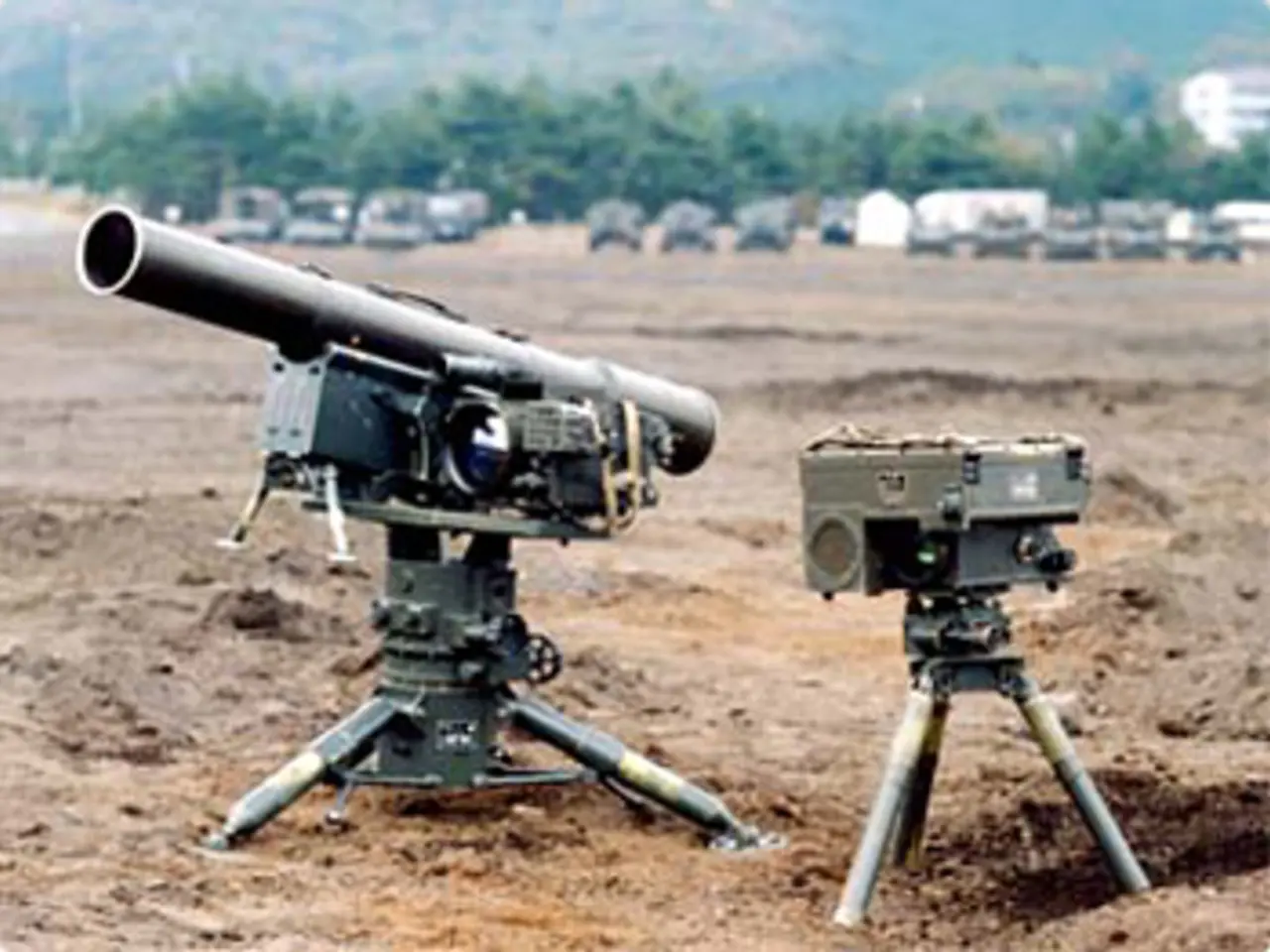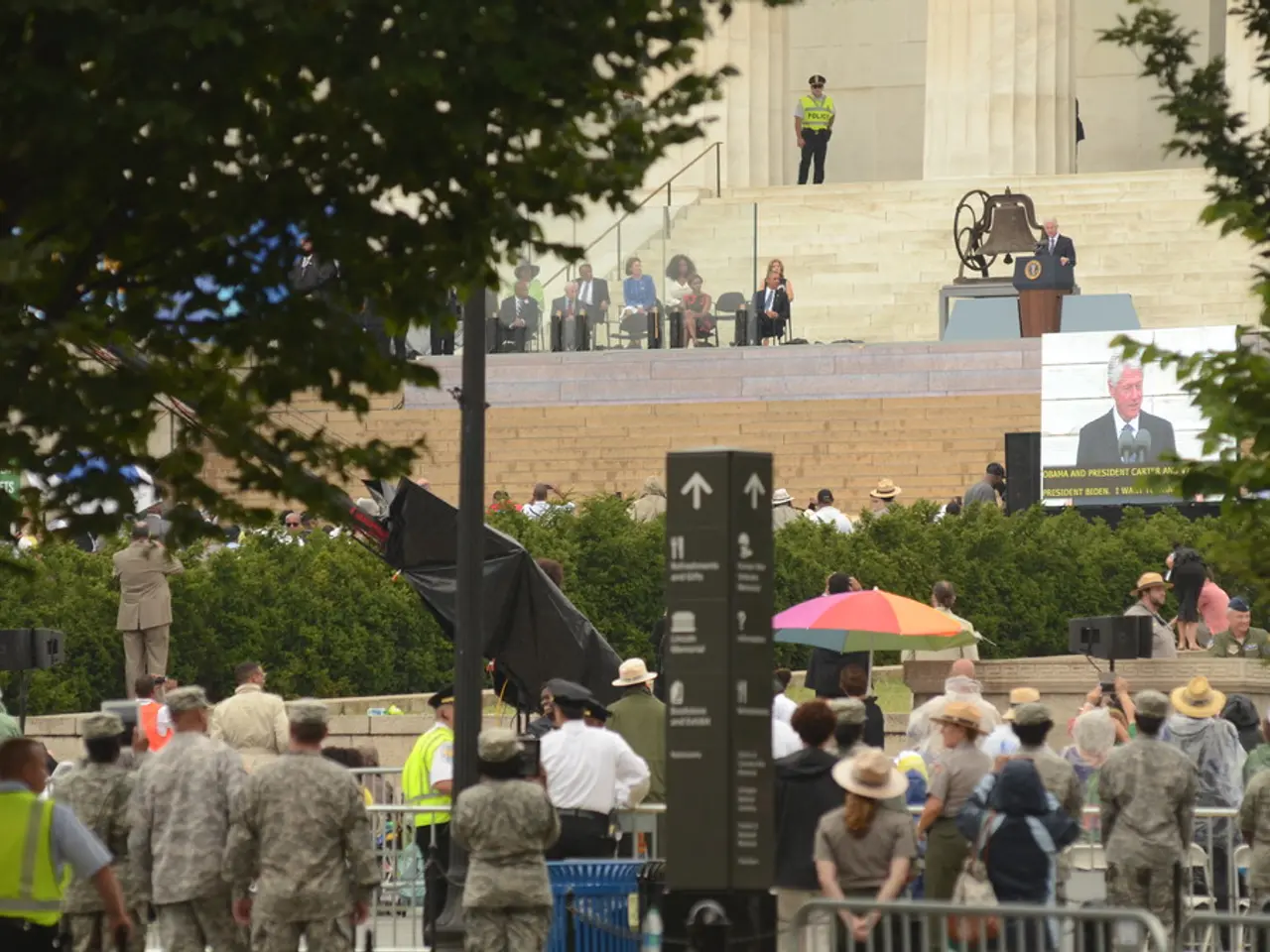Escalating tensions between the U.S. and Russia lead to Russia's missile deployment.
Russia's recent decision to end its unilateral moratorium and resume deployment of short- and medium-range ground-launched missiles, including the nuclear-capable Oreshnik missile in Belarus, marks a significant escalation in post-Cold War missile arms competition. This move formally terminates Russia's commitment to the Intermediate-Range Nuclear Forces (INF) framework and signals a new phase of military escalation tied to ongoing geopolitical tensions, particularly related to NATO and the conflict in Ukraine.
Key details include:
- Russia's Deployment: The Oreshnik missile, capable of carrying nuclear warheads and already used conventionally in Ukraine, is being deployed in Belarus. Russia is also considering further deployments across strategic locations like Kaliningrad, Crimea, and the Donbas region.
- Reasoning: Russia cites NATO’s anti-Russian policies, specifically the transfer and training with U.S.-made land-based INF-range missile systems in Europe and the Asia-Pacific region, as the collapse of conditions for its unilateral moratorium. Russian officials frame this as creating a “new nuclear reality” and have forecasted “further steps” in missile deployments.
- Historical Context: The INF Treaty, signed in 1987 under Reagan and Gorbachev, prohibited ground-launched missiles with ranges of 500 to 5,500 kilometers. The U.S. withdrew in 2019 citing Russian treaty violations, but Russia kept a moratorium until this recent official termination.
- Strategic Implications: Russia’s missile deployments are not isolated but part of a coordinated strategy to intimidate NATO, undermine Western unity, and dismantle arms control norms. The moves heighten global instability through the reintroduction of treaty-violating missile systems normalized under battlefield conditions and increase the risk of near-instant nuclear or conventional escalation.
- Broader Geopolitical Impact: The decision aligns with Russia’s intensified approach to coercion and escalation amid the Ukraine war and Western sanctions. It also acts as domestic political signaling by Putin’s leadership, reinforcing maximalist war aims and domestic support for continued conflict.
- U.S. and Allied Response: The U.S. and NATO see these deployments as manifestations of Russia’s strategic aggression. Addressing them requires a comprehensive approach combining military readiness, diplomatic pressure, arms control efforts, and information resilience to counter Russia’s integrated coercive strategy.
Meanwhile, the Kremlin has announced that Malaysia's King Sultan Ibrahim is on a historic state visit to Moscow, signaling the Kremlin's efforts to strengthen alliances across Asia amid rising Western pressure. President Putin is cautious not to antagonize Trump, anticipating a potential thaw in future U.S.-Russia ties. However, Russia has accused the U.S., along with its NATO and Asia-Pacific allies, of ignoring its efforts to prevent a renewed arms race.
[1] Reuters (2021). Russia to deploy short-range missiles in Belarus, ending INF Treaty commitment. [online] Available at: https://www.reuters.com/world/europe/russia-to-deploy-short-range-missiles-in-belarus-ending-inf-treaty-commitment-2021-03-26/
[2] BBC News (2021). Russia's Putin warns West over Ukraine as he unveils new missiles. [online] Available at: https://www.bbc.com/news/world-europe-56616923
[3] The Guardian (2021). Russia’s new missiles: what Putin’s show of force means for the world. [online] Available at: https://www.theguardian.com/world/2021/mar/26/russias-new-missiles-what-putins-show-of-force-means-for-the-world
[4] The New York Times (2021). Putin Says Ukraine's Regions Are Forever Part of Russia, as He Unveils New Missiles. [online] Available at: https://www.nytimes.com/2021/03/26/world/europe/putin-ukraine-missiles.html
[5] The Washington Post (2021). Putin’s new missile show is a warning to the West — and a sign that the Ukraine conflict is far from over. [online] Available at: https://www.washingtonpost.com/world/europe/putins-new-missile-show-is-a-warning-to-the-west--and-a-sign-that-the-ukraine-conflict-is-far-from-over/2021/03/26/f438e5a2-187a-11eb-971a-f21561c046c1_story.html
Politics and the general news concerning war and conflicts are deeply entwined as Russia's decision to deploy nuclear-capable Oreshnik missiles in Belarus and potentially other strategic locations poses a significant escalation in the missile arms competition post-Cold War, particularly with NATO and occasions related to the conflict in Ukraine. This move also signals a new phase of military escalation tied to ongoing geopolitical tensions and marks the formal termination of Russia's commitment to the Intermediate-Range Nuclear Forces (INF) framework, resulting in a reintroduction of treaty-violating missile systems normalized under battlefield conditions.







